IWC Schaffhausen
Around the World in the #SilverSpitfire with IWC Schaffhausen
Because there is something about the specific 75-year-old plane that Jones and Brooks wanted to use to travel the 43,000 kilometers, which will be divided into the 100 segments, that held particular appeal to IWC’s CEO. He explains, “The Supermarine Spitfire is one of the most iconic feats of engineering and design. The Spitfire became a legend during WWII and in particular in the skies during the Battle of Britain.”

British pilots Steve Boultbee Brooks and Matt Jones, founders of the Boultbee Flight Academy with Christoph Grainger-Herr, CEO of IWC Schaffhausen
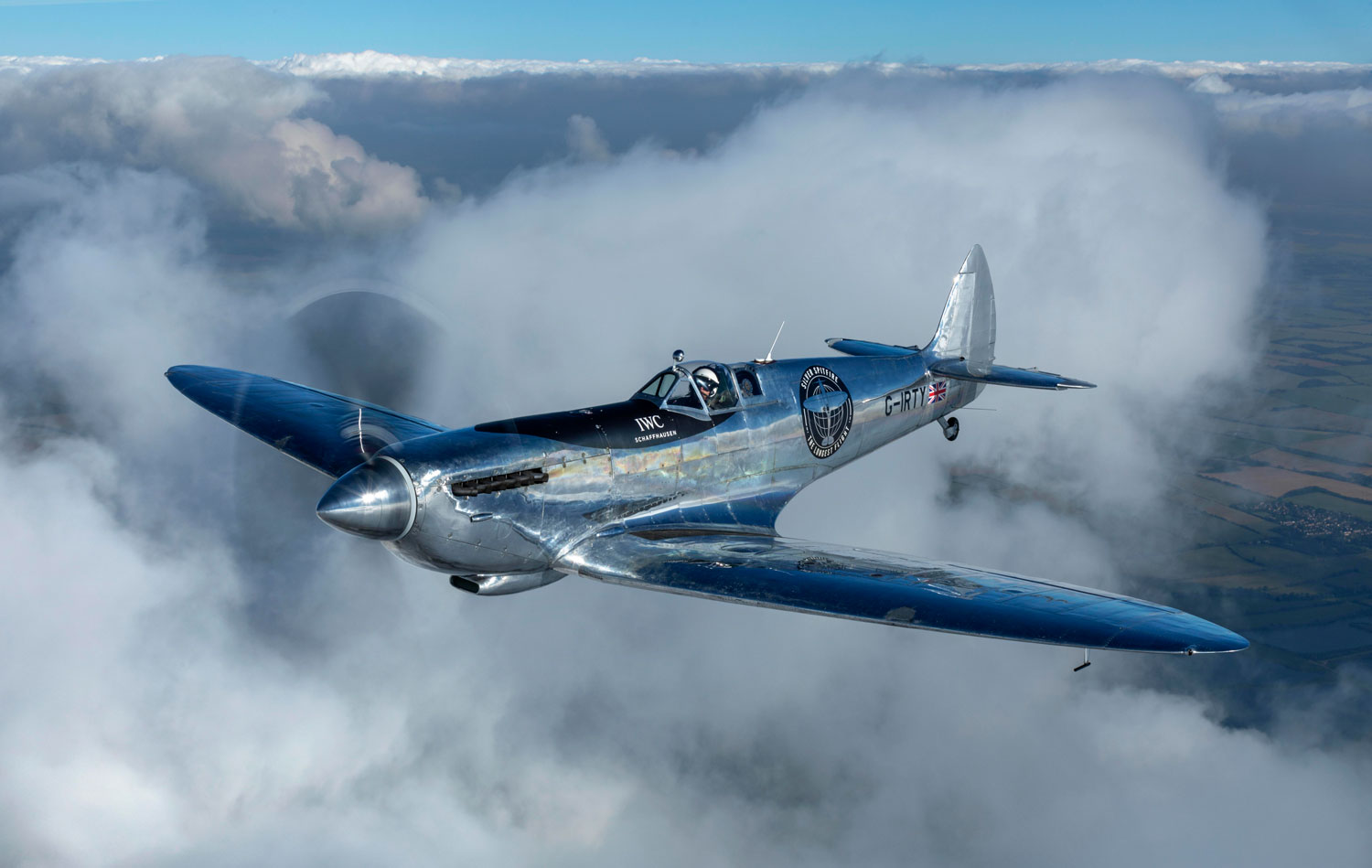
The “Silver Spitfire”, with the new G-IRTY registration, has been taking off for flight tests in the month before embarking on its unprecedented flight around the world in August 2019 (Photo by John M. Dibbs).
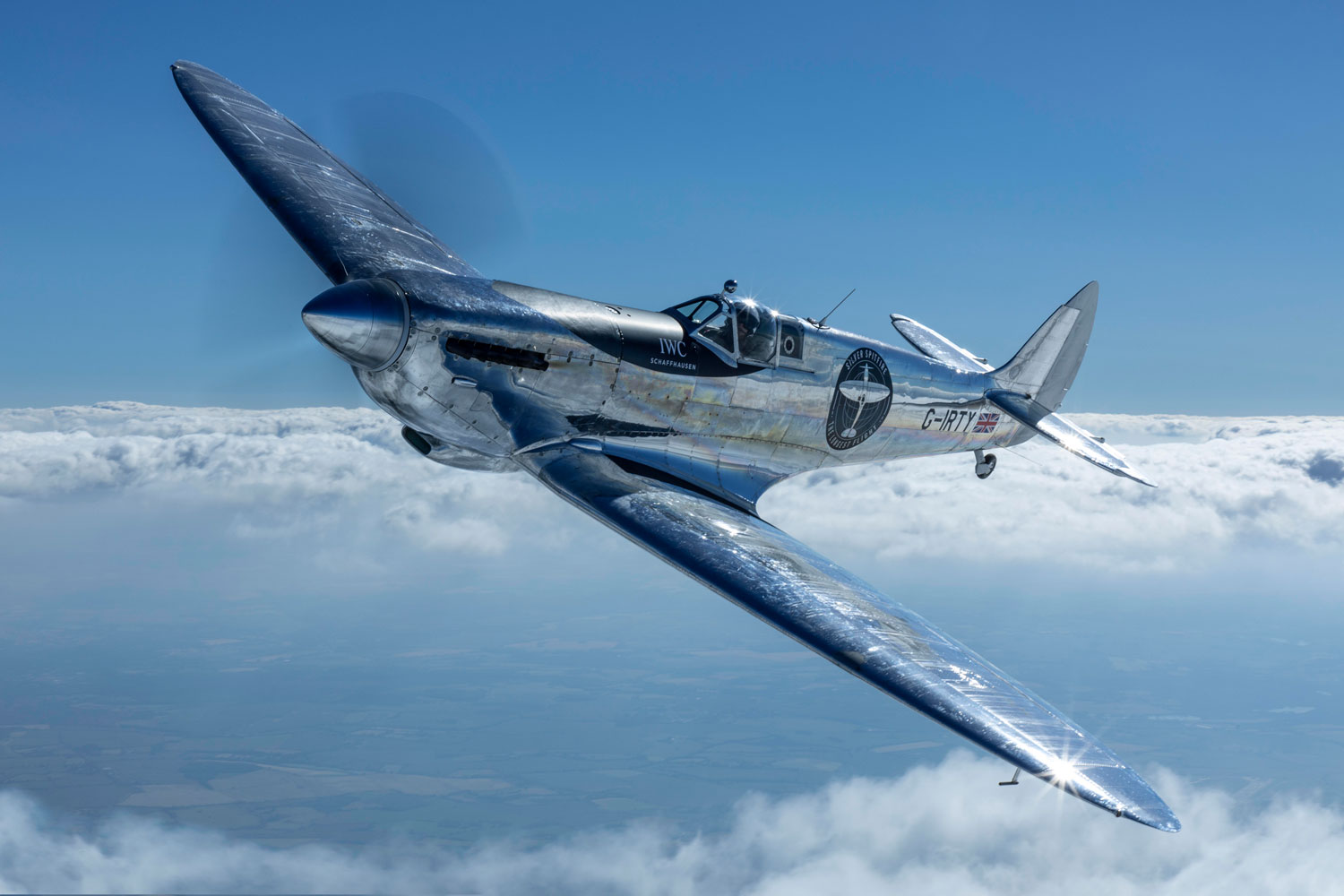
The “Silver Spitfire”, with the new G-IRTY registration, has been taking off for flight tests in the month before embarking on its unprecedented flight around the world in August 2019 (Photo by John M. Dibbs).
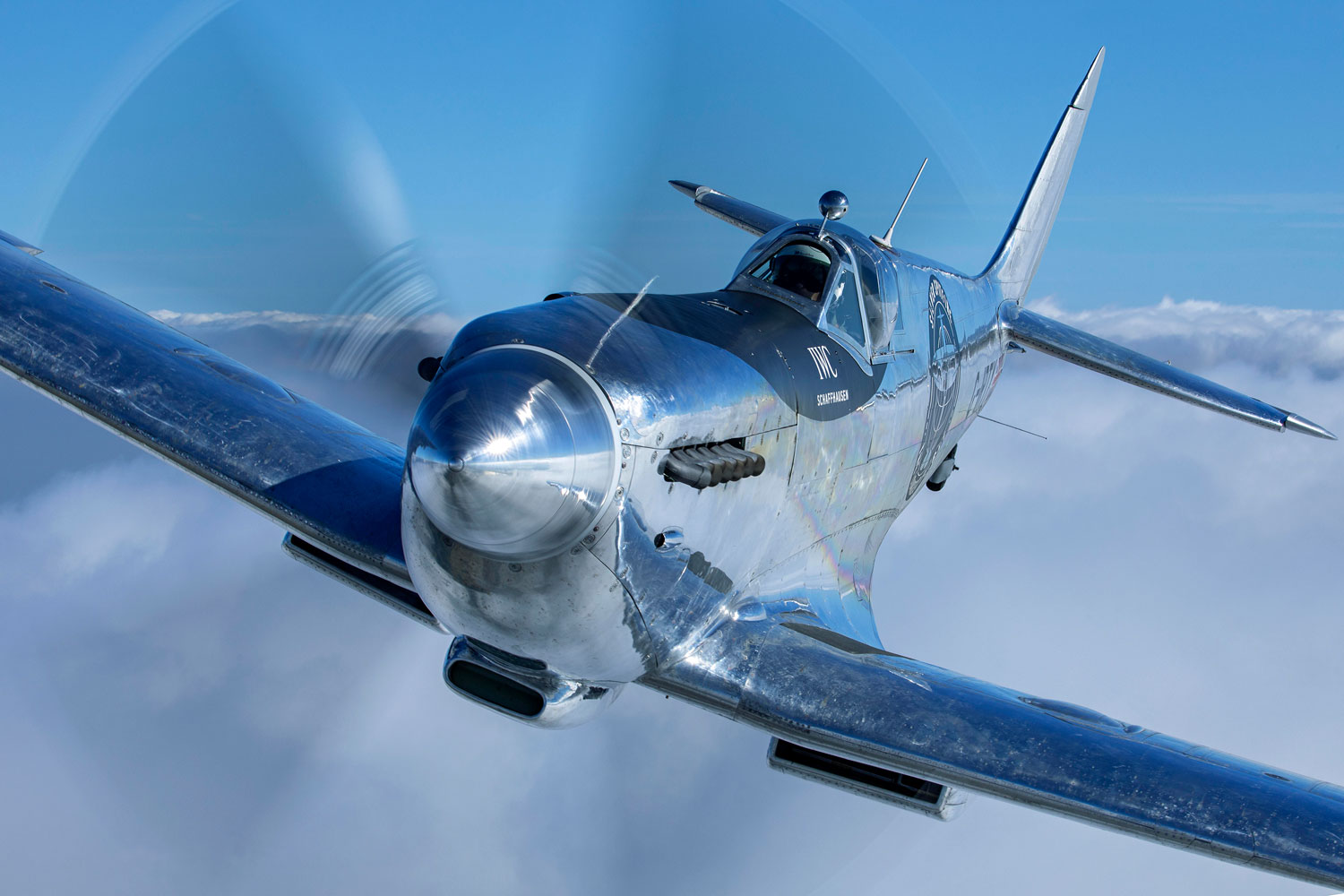
The “Silver Spitfire”, with the new G-IRTY registration, has been taking off for flight tests in the month before embarking on its unprecedented flight around the world in August 2019 (Photo by John M. Dibbs).
The Spitfire was also paired with a large Rolls Royce Merlin engine that produced 1,030 horsepower and combined with its incredible light weight, made for the most maneuverable fighter plane of its era and was a key to the RAF’s victory over the Luftwaffe in 1940. As a testament to the plane’s incredible design, in later versions, the engine would be upgraded to more than double this horsepower and used in tests related to breaking the sound barrier with no significant changes to the plane’s original configuration.
Says Grainger-Herr, “As an act of design ingenuity that was tested in the most harrowing of circumstances, the Spitfire is a legend. It is a masterpiece of engineering and at the same time its function is defined by elements such as its elliptical wings or the rivets that are counter sunk to reduce aerodynamic drag, these are some of the things that make it so beautiful.
“I immediately saw parallels with IWC, which is a luxury Swiss watch brand that always has engineered functionalism as one of its greatest priorities. Indeed, it was our capacity to create incredible highly legible and incredible robust timepiece that made us the supplier to the Royal Air Force with the famous Mark XI watch.” The timepiece that Grainger-Herr refers to is in horological terms as legendary as the Spitfire.
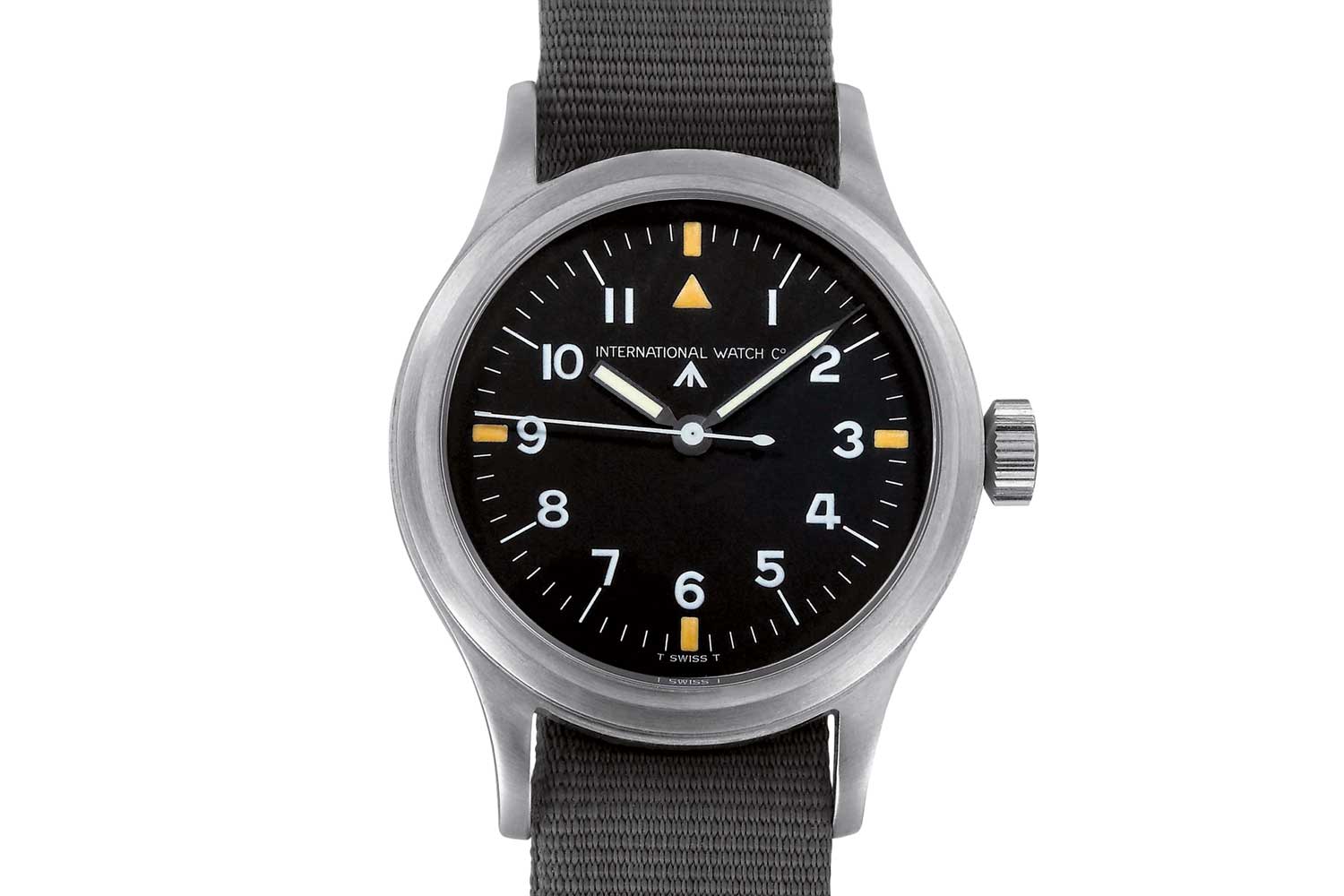
An IWC Mark XI from 1948
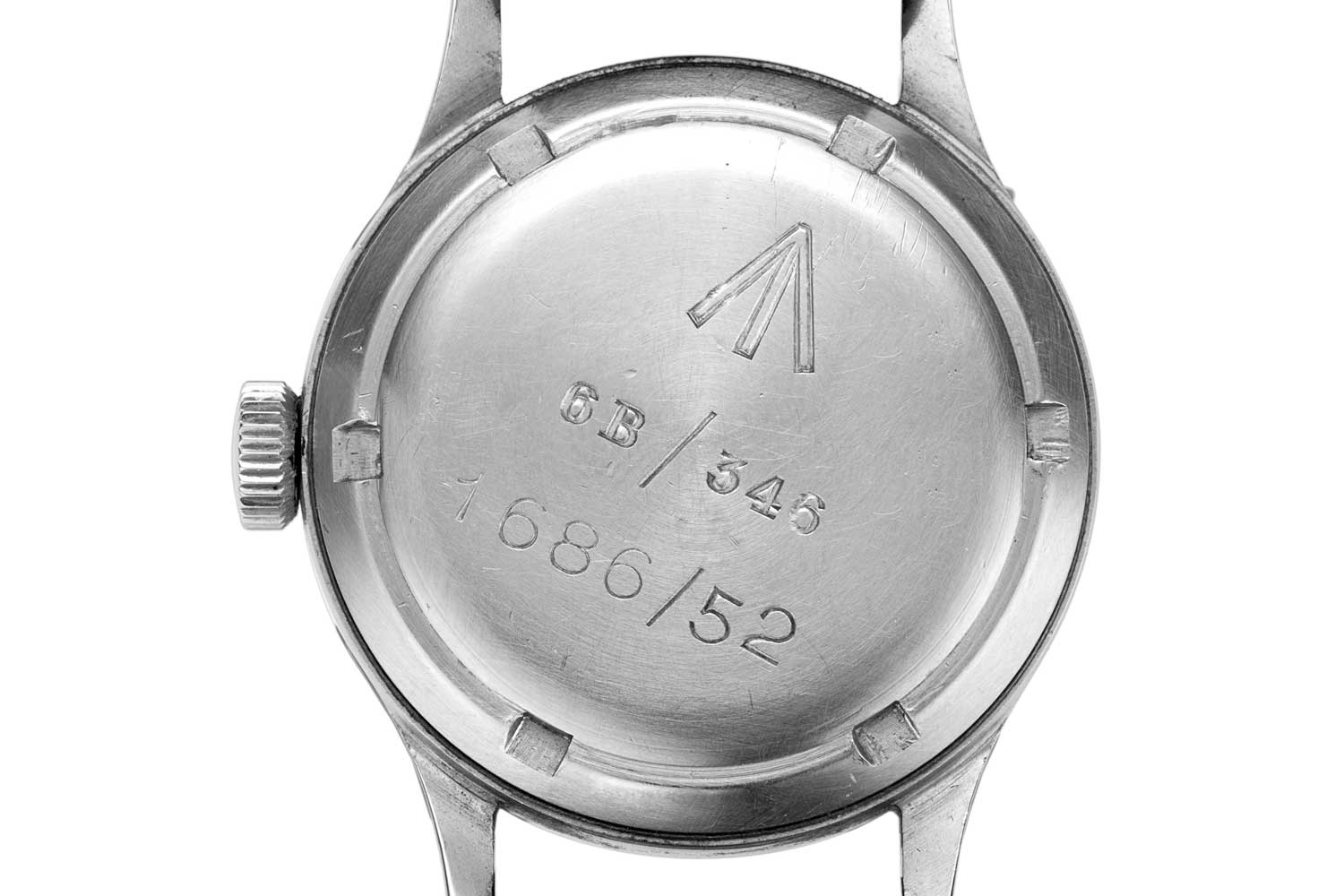
Caseback of a Mark XI with military engravings
The result was the Mark XI IWC watch, which beginning in 1949 was issued to various branches of the RAF. Movement was the Caliber 89. All watches had to be regulated at the Greenwich observatory and had to be retested there every year. In 1952 the dial was endowed with its now iconic triangle-shaped index at 12 o’clock. IWC was the supplier to the RAF with the Mark XI from 1949 all the way to 1981. And was the sole supplier from the early ’60s onward. Today Mark XI watches are some of the most coveted vintage timepieces, while IWC makes a superb 40mm re-edition of this timepiece in its current line-up. Last year Revolution and The Rake, in collaboration with IWC created a 150-piece limited edition 36mm bronze case tribute to the legendary Mark XI that sold out in 18 minutes online.

The IWC Calibre 89

Pilot’s Watch Mark XVIII Edition “Tribute to Mark 11” caseback and dial-side
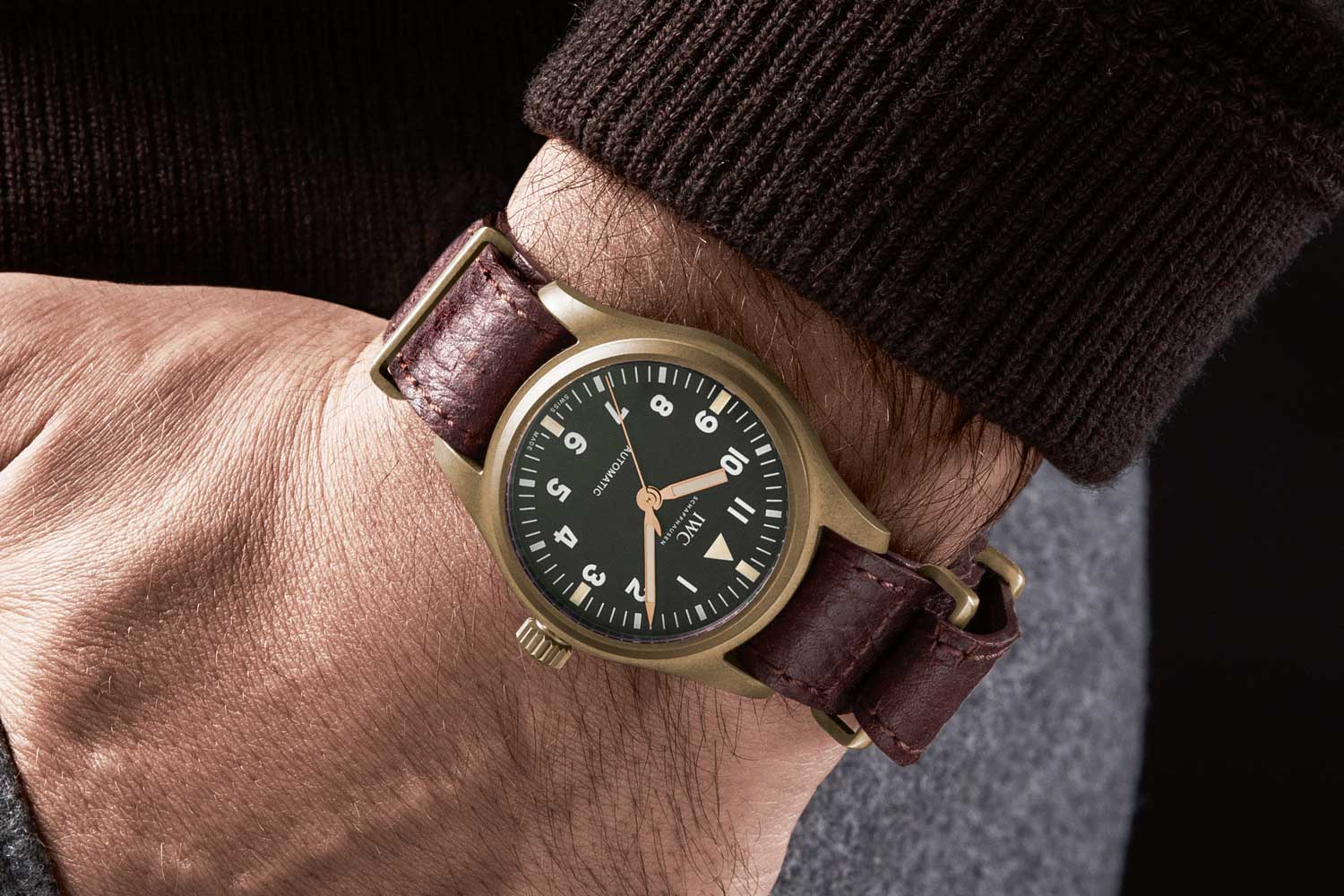
IWC Pilot’s Watch Automatic 36mm Special Edition for The Rake & Revolution (Image © Revolution)
Says Brooks, “There is such reverence for this aircraft. Children still make models of the Spitfire, yet in many parts of the world people have never seen one in reality. We decided that we would fly a plane from England across to the United States, then to Asia and India before turning to the Middle East and returning back to Europe. We would stop in 100 different destinations and welcome people to come see the plane and hear about its history and our adventure.
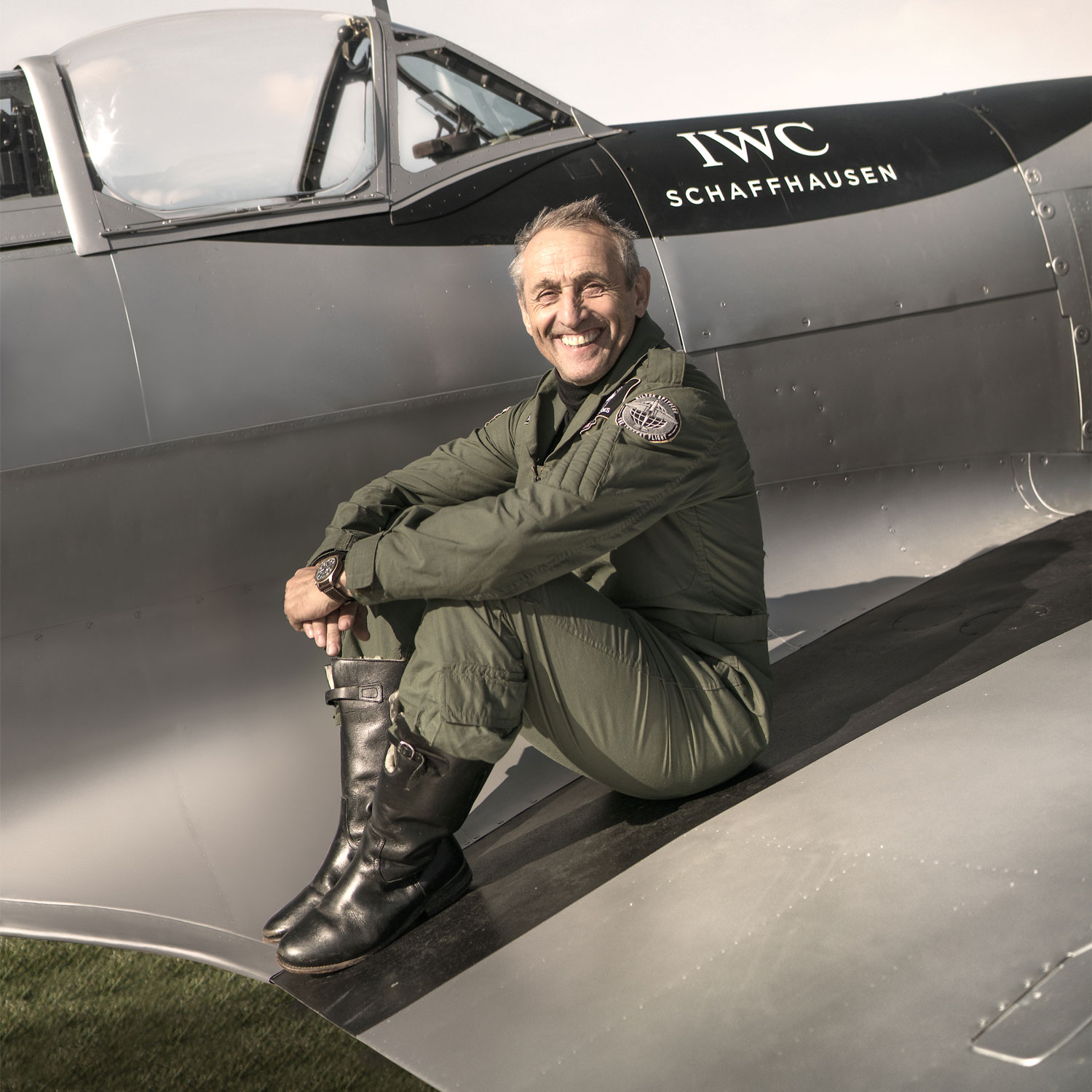
Steve Boultbee Brooks, pilot and co-founder of the Boultbee Flight Academy
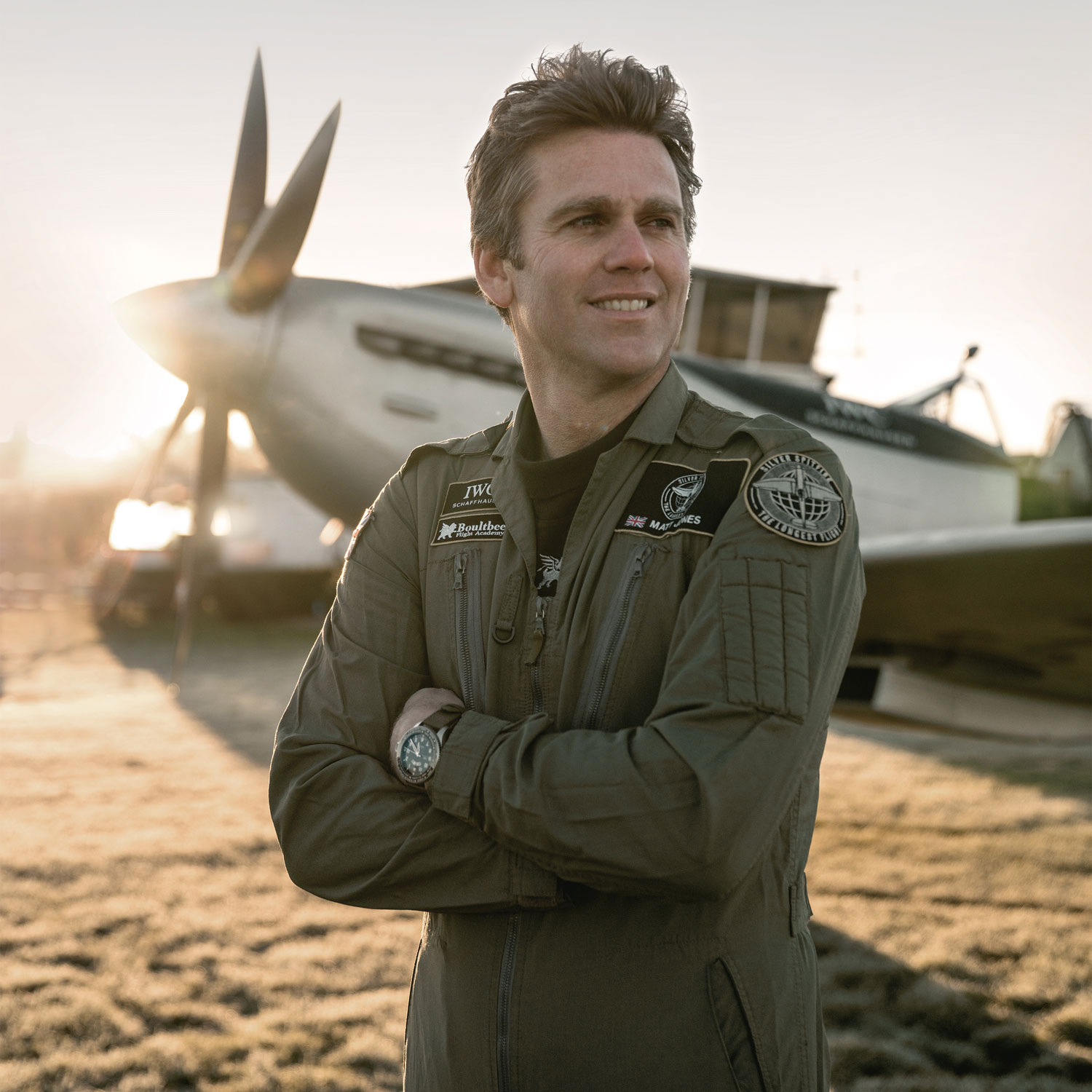
Matt Jones, pilot and co-founder of the Boultbee Flight Academy
Says Grainger-Herr, “I was very impressed by Matt and Steve. They explained to me that the cabin of the Spitfire is not pressurized so you experience all the weather condition in the extreme. Over the Artic and even the Atlantic at high altitude they will experience freezing weather and at low altitudes over Nevada, the cabin will be at boiling point. This really is a tribute to an amazing engineering icon but also a huge test of human endurance. I think the two factors together are really appealing and very representative of the values of IWC.”
As I was lucky enough to hold the launch party for IWC’s limited edition collaboration with this magazine, this January, at the brand’s booth at SIHH, I was blown away by the very specially prepared Spitfire that the duo of Brooks and Jones will be using for this incredible journey.
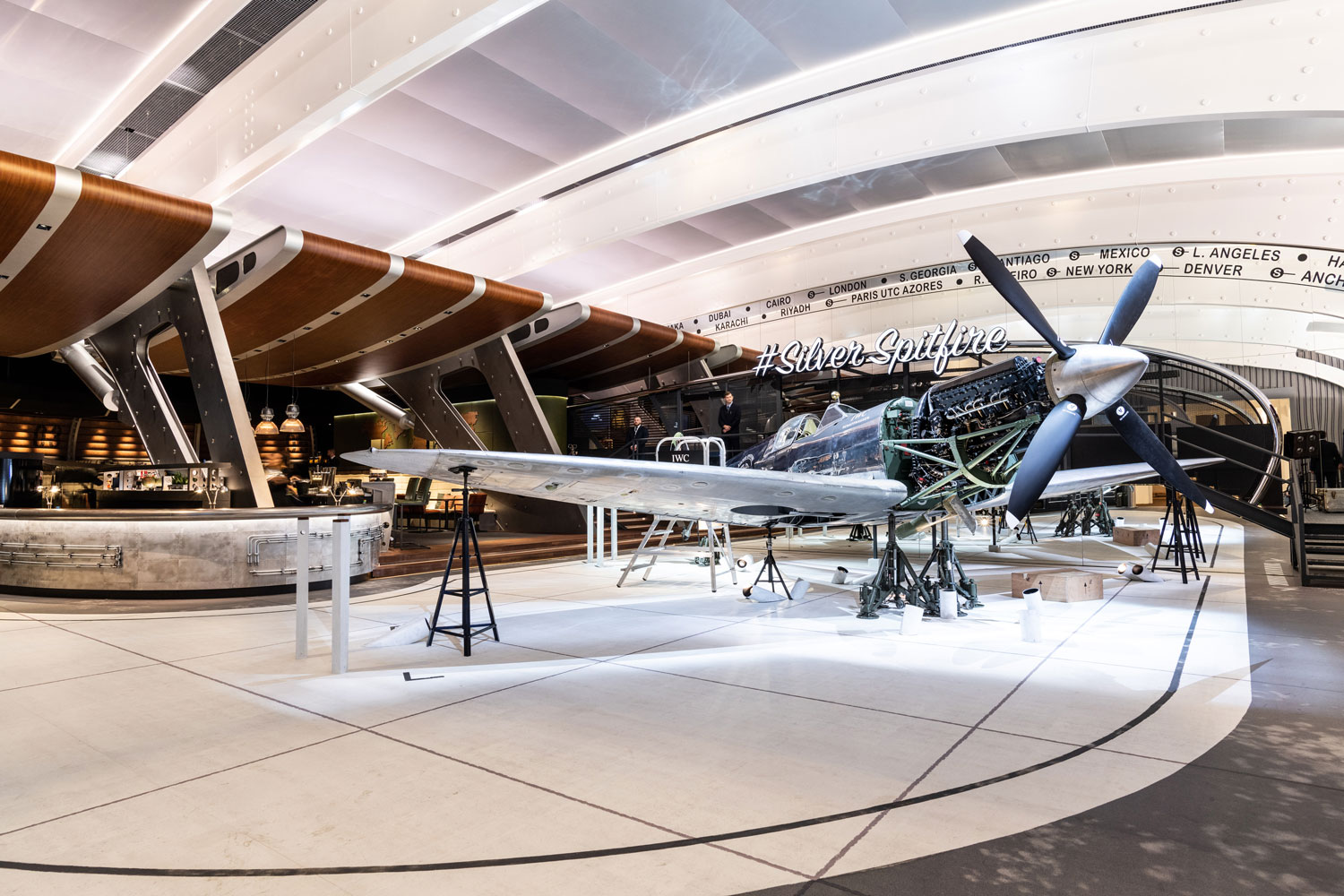
The Silver Spitfire inside the IWC booth at SIHH 2019
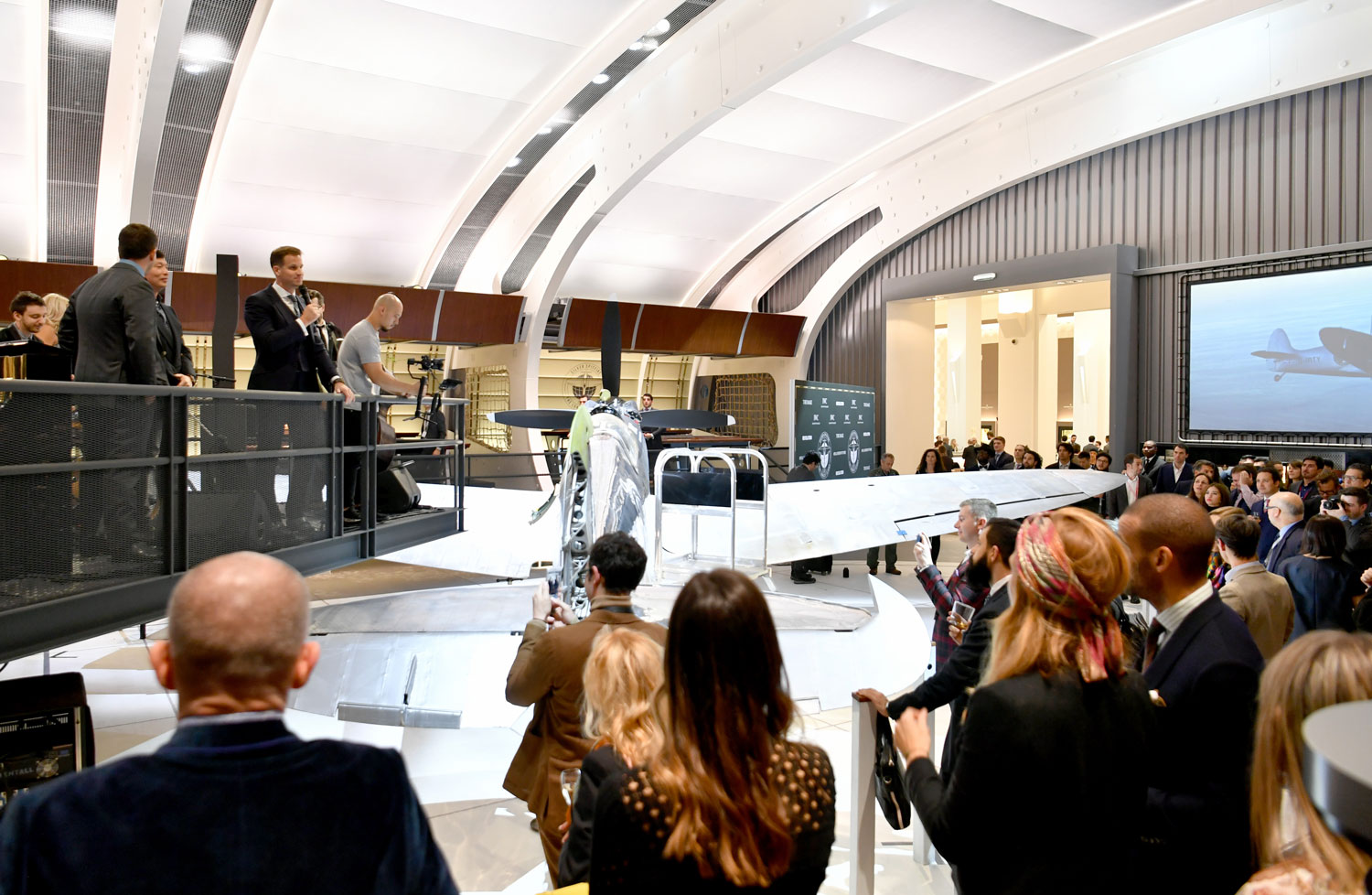
Launch of the IWC Pilot’s Watch Automatic 36mm Special Edition for The Rake & Revolution at SIHH 2019 (Image © Revolution)
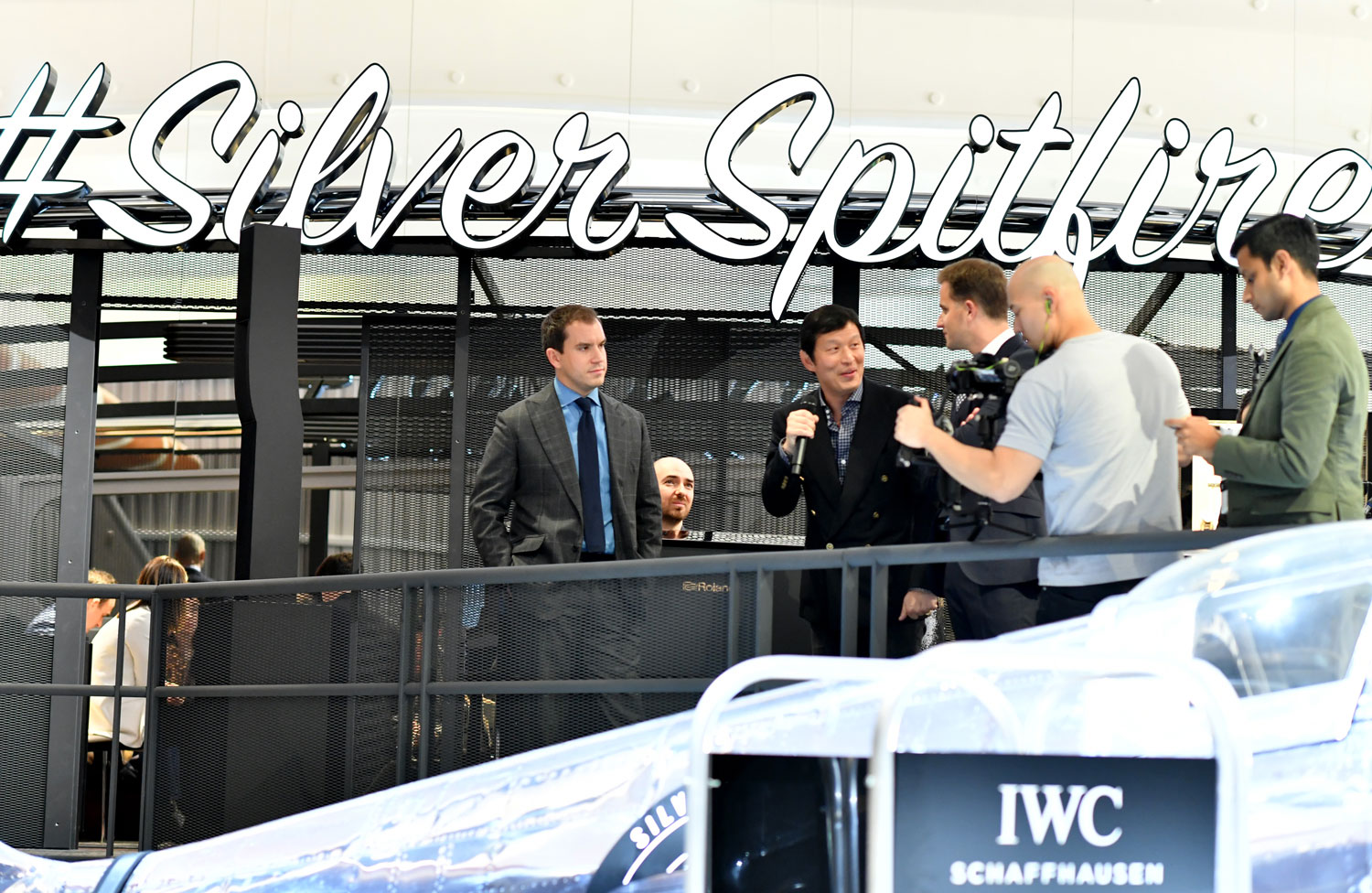
Launch of the IWC Pilot’s Watch Automatic 36mm Special Edition for The Rake & Revolution at SIHH 2019 (Image © Revolution)
He continues, “I think this is without a doubt the single most beautiful Spitfire in existence. The result of the meticulous hand polishing is simply breath-taking. Thanks to this shiny surface the unmistakeable silhouette of the aircraft and in particular the signature elliptical wings are more defined and pronounced than ever before.” Instead of the normal two fuel tanks the Silver Spitfire adds 6 more for a total of 8 tanks, while the powerful Rolls-Royce Merlin 70 1700 horsepower engines have been given a total overhaul.”
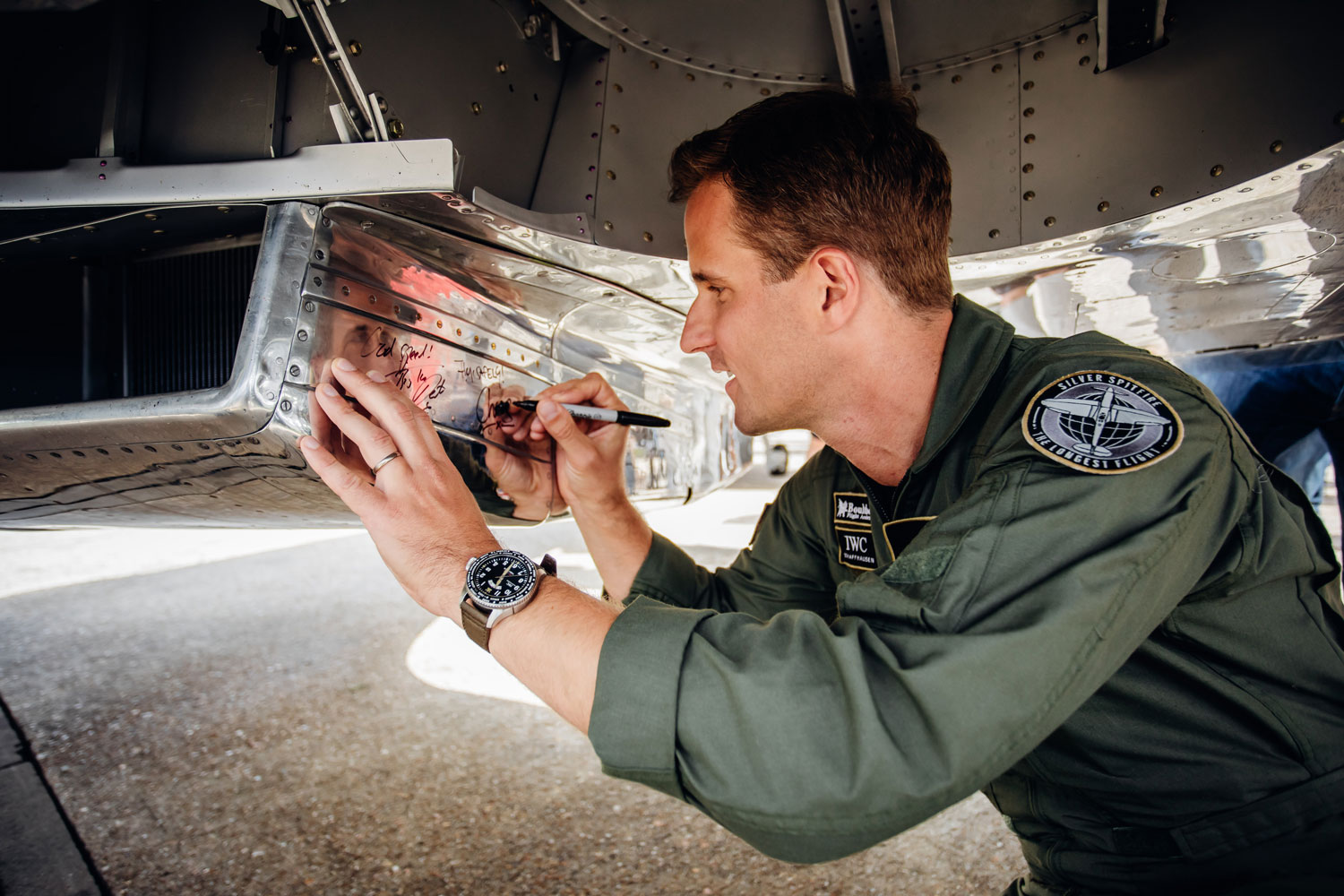
GOODWOOD, WEST SUSSEX, ENGLAND - AUGUST 5: Christoph Grainger-Herr attending the celebration of the official start of the “Silver Spitfire - The Longest Flight” expedition in Goodwood. To the roaring applause of more than 400 guests, the carefully restored and polished Spitfire aircraft embarked on its unprecedented flight around the world (Photo by Remy Steiner/Getty Images for IWC).

GOODWOOD, WEST SUSSEX, ENGLAND - AUGUST 5: Pilots Steve Boultbee Brooks and Matt Jones attending the celebration of the official start of the “Silver Spitfire - The Longest Flight” expedition in Goodwood. To the roaring applause of more than 400 guests, the carefully restored and polished Spitfire aircraft embarked on its unprecedented flight around the world (Photo by Remy Steiner/Getty Images for IWC).
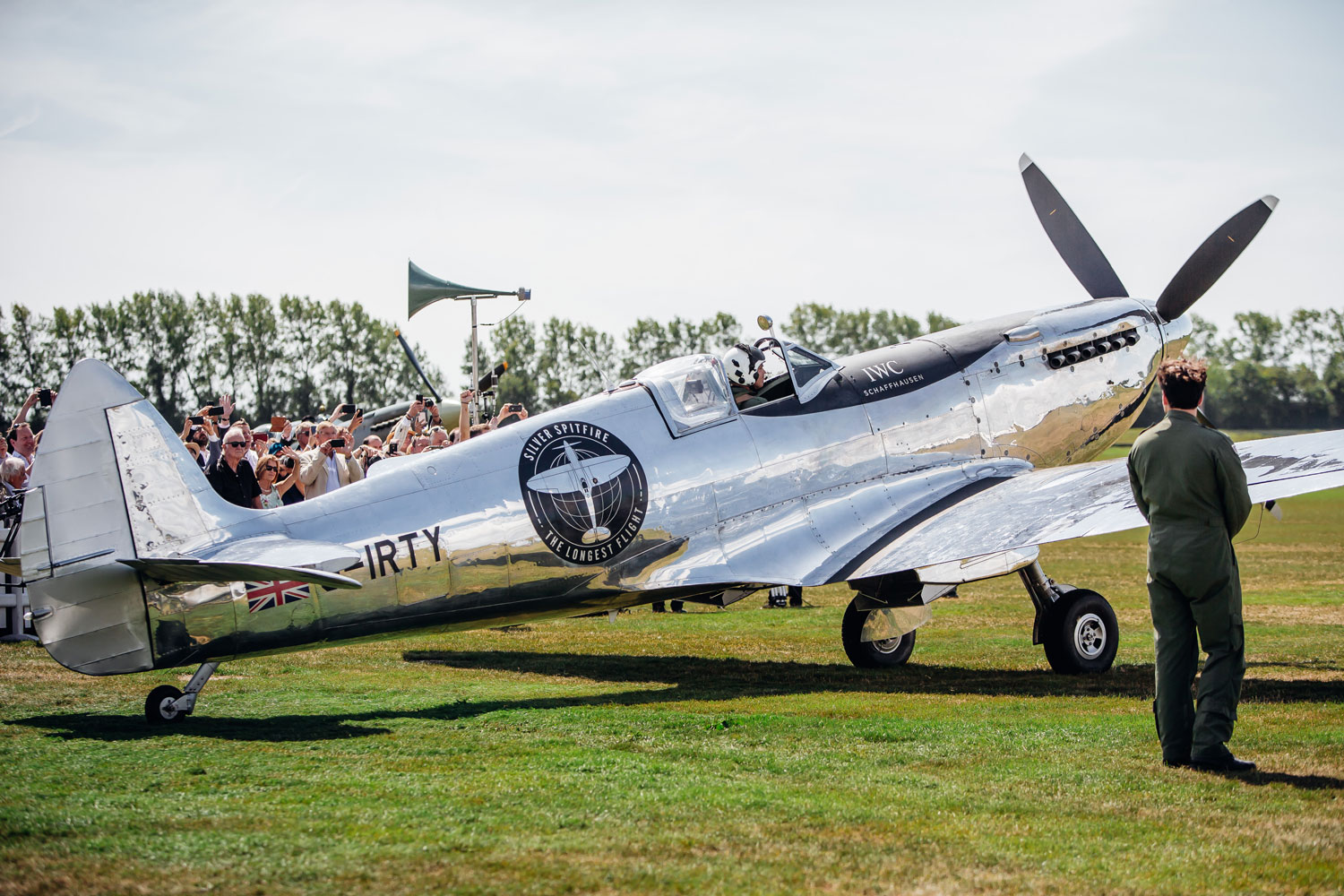
GOODWOOD, WEST SUSSEX, ENGLAND - AUGUST 5: IWC Schaffhausen and the Boultbee Flight Academy, in collaboration with Aviation Adventures Ltd, have celebrated the official start of the “Silver Spitfire - The Longest Flight” expedition in Goodwood. To the roaring applause of more than 400 guests, the carefully restored and polished Spitfire aircraft embarked on its unprecedented flight around the world (Photo by Remy Steiner/Getty Images for IWC).
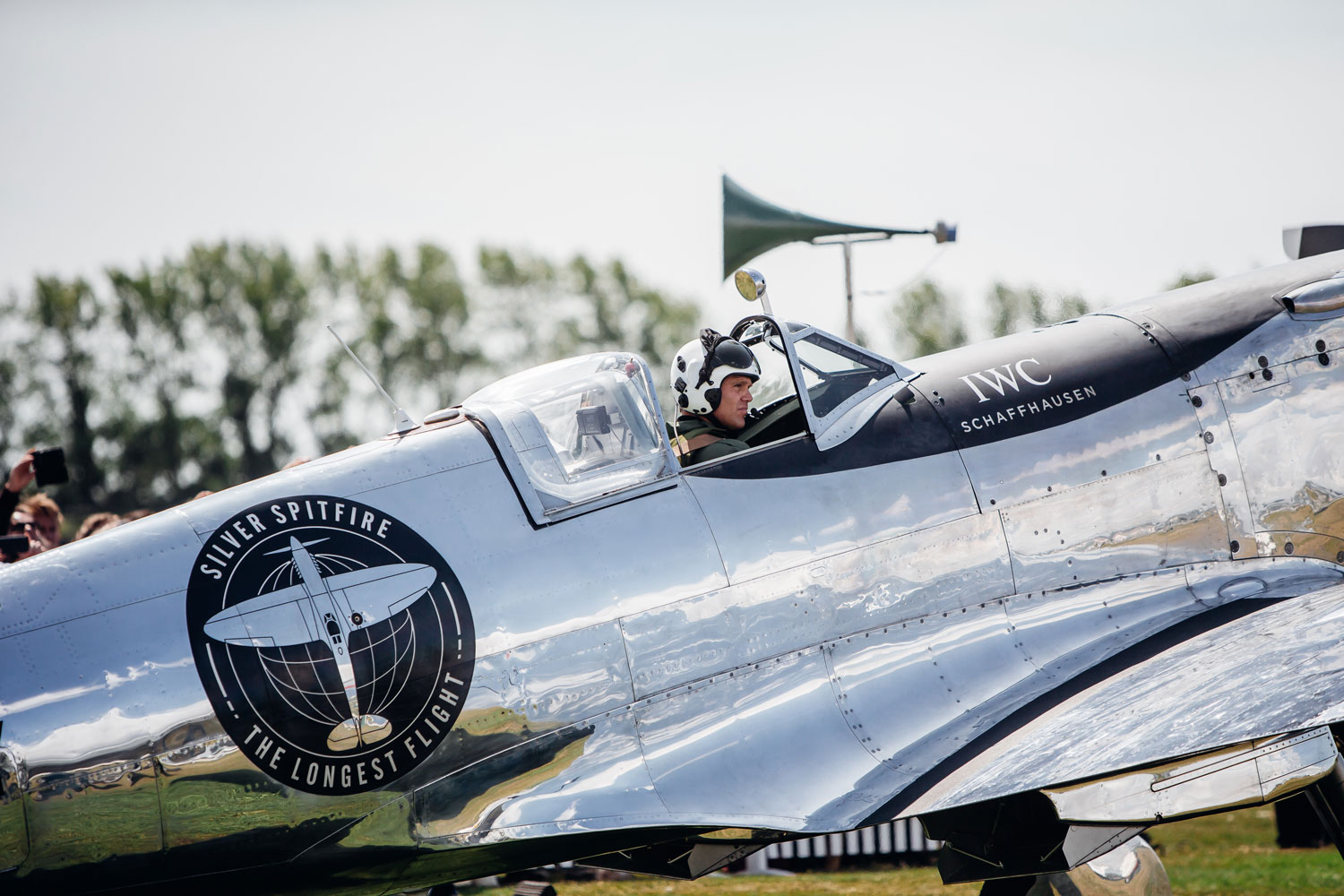
GOODWOOD, WEST SUSSEX, ENGLAND - AUGUST 5: IWC Schaffhausen and the Boultbee Flight Academy, in collaboration with Aviation Adventures Ltd, have celebrated the official start of the “Silver Spitfire - The Longest Flight” expedition in Goodwood. To the roaring applause of more than 400 guests, the carefully restored and polished Spitfire aircraft embarked on its unprecedented flight around the world (Photo by Remy Steiner/Getty Images for IWC).
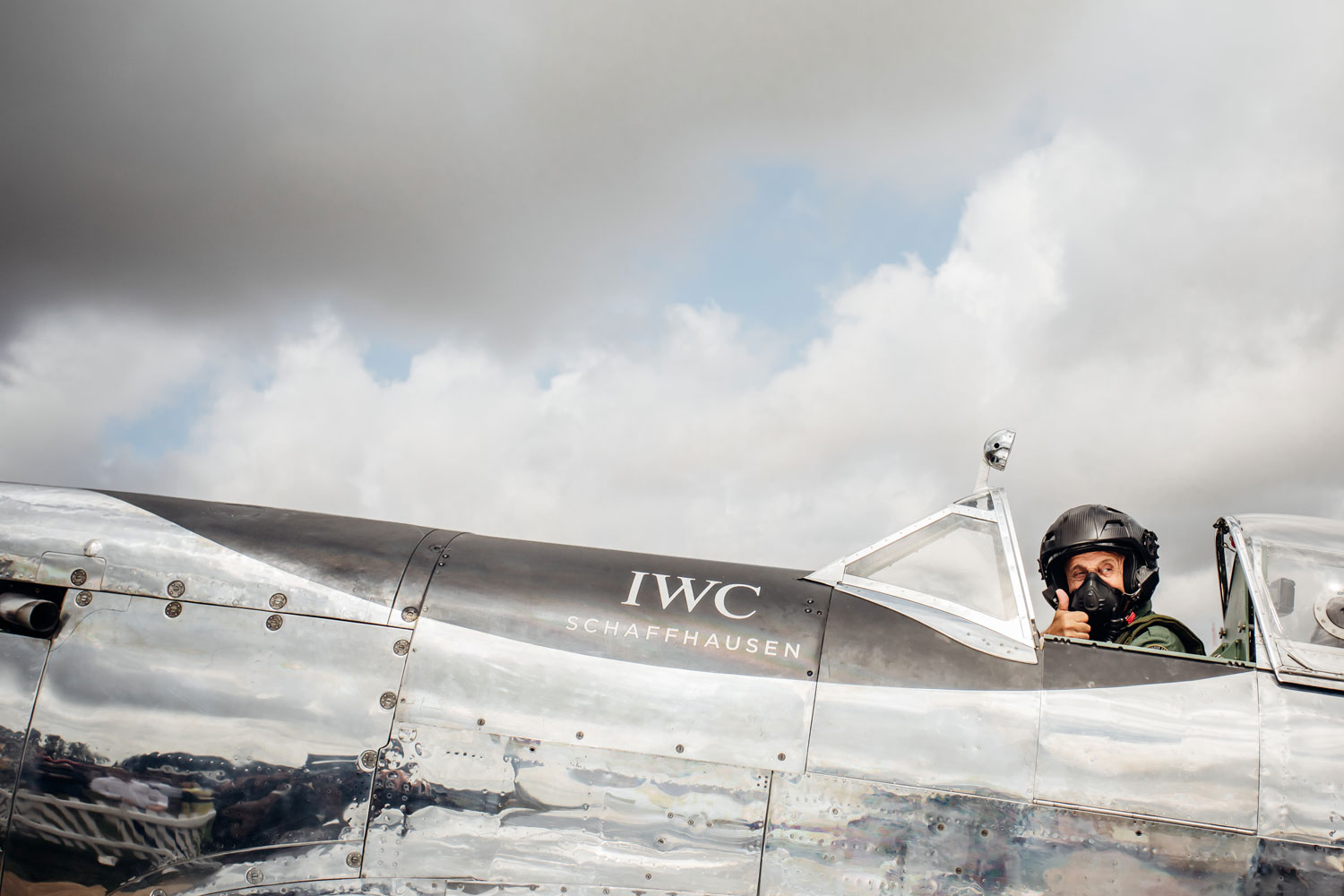
GOODWOOD, WEST SUSSEX, ENGLAND - AUGUST 5: <> at Goodwood on August 4, 2019 in Chichester, England. (Photo by Remy Steiner/Getty Images for IWC)
Says Jones, “When discussing our choice of watch with the IWC team, the idea of a UTC watch, that could rapidly and legibly display time in multiple zones and that could be reset with ease to a new local time zone, but also show Greenwich Mean Time or Zulu Time or Universal Time Coordinated, which is the universal reference time pilots use, was key. Fortunately IWC happens to have a watch called the Timezoner, which from a functional perspective is an absolute work of genius.” OK, if you’ve never operated an IWC Timezoner before then you need to because Jones is totally correct. The watch, which has the single most functional multi-time zone display is actually based on an innovative bezel control system first invented by a man named Michael Vogt.
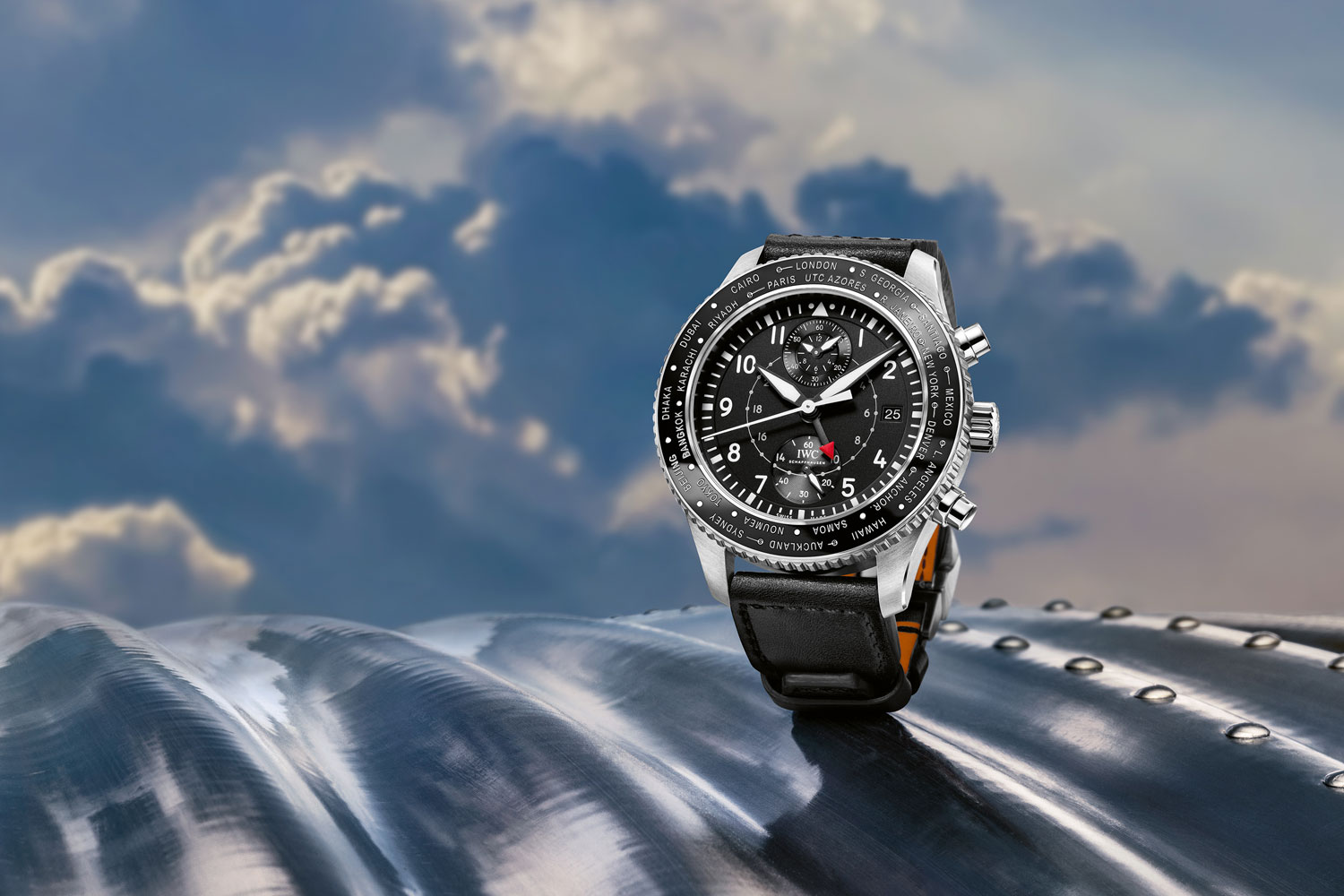
The IWC Pilot’s Watch Timezoner Chronograph
If you wanted to return to the original city simply rotate the bi-directional bezel back and the hands and date display would instantly switch back. It was simply speaking the easiest to use and most legible world time/GMT watch on the planet. It was strictly speaking more of a GMT/UTC than a world time watch because it displayed time in one zone at any given moment rather than time in 24 zones simultaneously. However, the world time display would be all but useless in the cockpit as it would be impossible to read. Says Jones, “In the cockpit especially that of a Spitfire, legibility is everything. The IWC Timezoner is the most legible multiple time zone watch we’ve ever used. In addition the way you switch between zones by simply pushing down on the bezel and turning it, makes it something you can operate even with gloves on. This watch will be a critical piece of equipment for our global journey.”
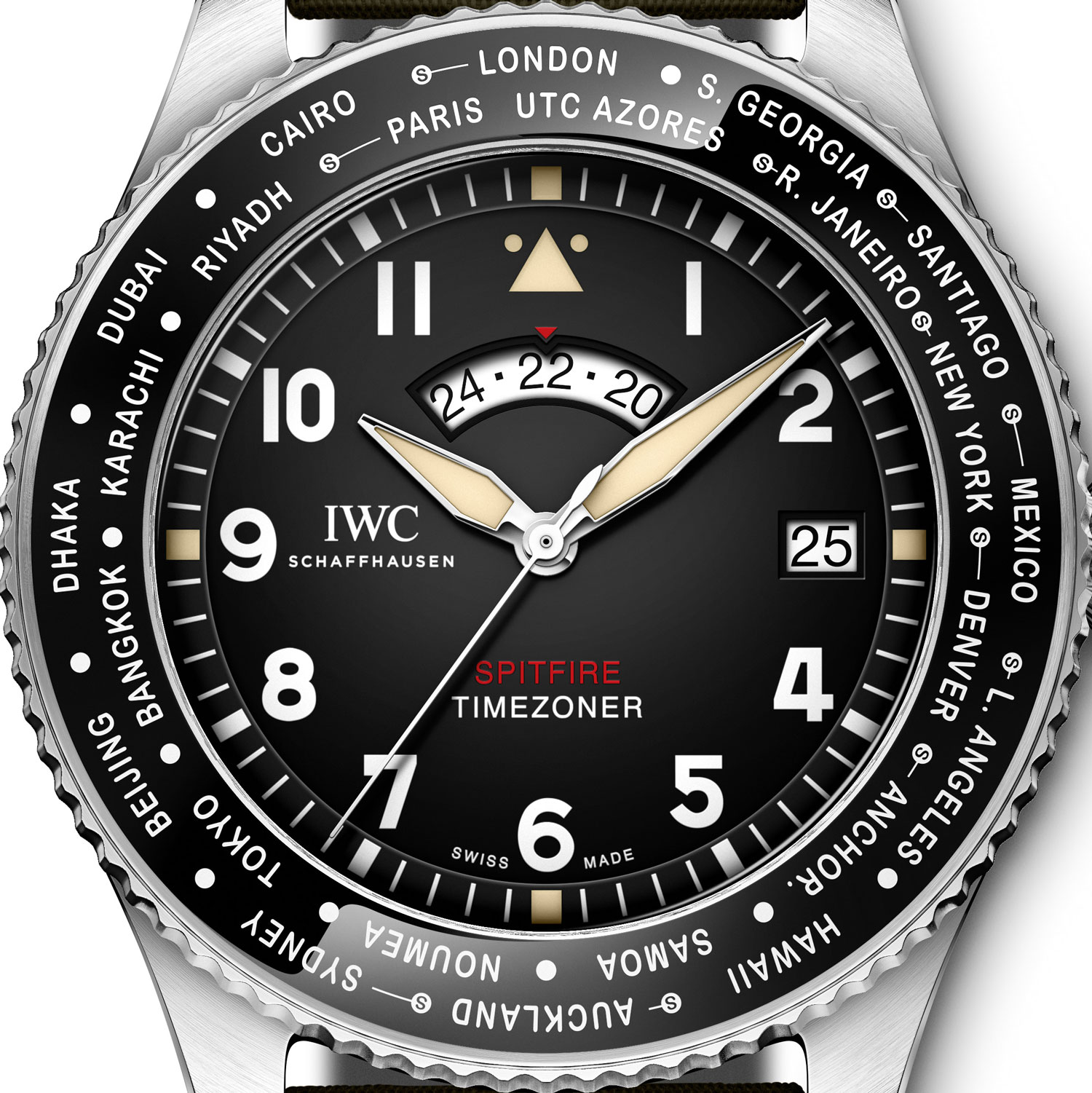
Ceramic bezel on the IWC Pilot’s Watch Timezoner Spitfire Edition “The Longest Flight” marking all 24 principle timezones
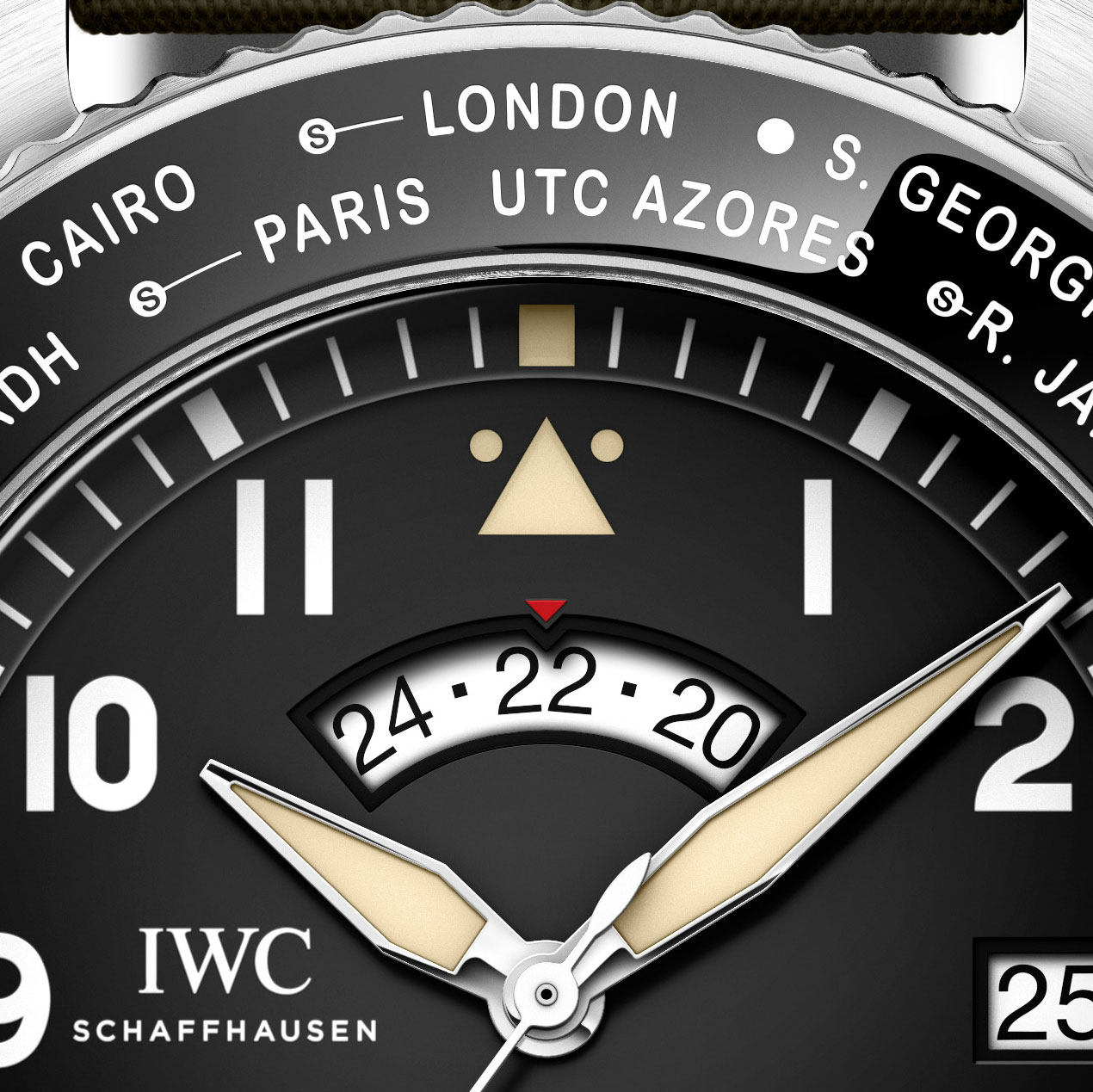
Lining up the city of interest at 12 o'clock using the bezel synchronizes the time, 24-hour indicator and the date
To commemorate the incredible journey of the Silver Spitfire around the world, IWC has created a very special limited edition called the Pilot’s Watch Timezoner Spitfire Edition “The Longest Flight”, which injects a large measure of retro-chic to the iconography of this handsome functional timepiece. It features an oversized steel case, black dial, black ceramic bezel engraved with the names of the 24 cities as well as Daylight Savings markings. It also features luminous material that evokes vintage aged tritium and comes on a highly appealing and very cool olive green military styled strap, ensuring that in their historic circumnavigation Jones and Brooks will not only be two of the most heroic pilots but also two of the most stylish in the air.
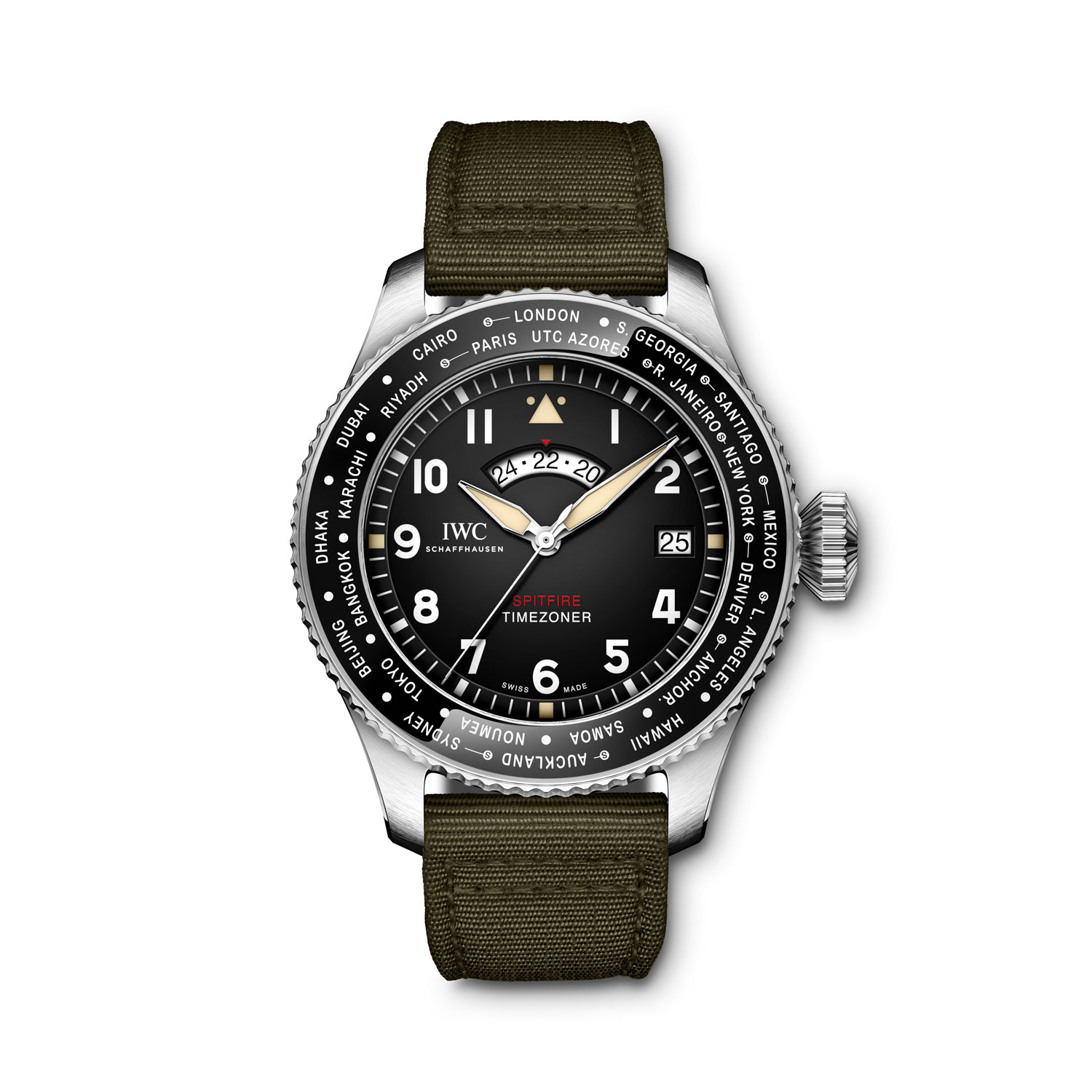
The IWC Pilot’s Watch Timezoner Spitfire Edition “The Longest Flight”
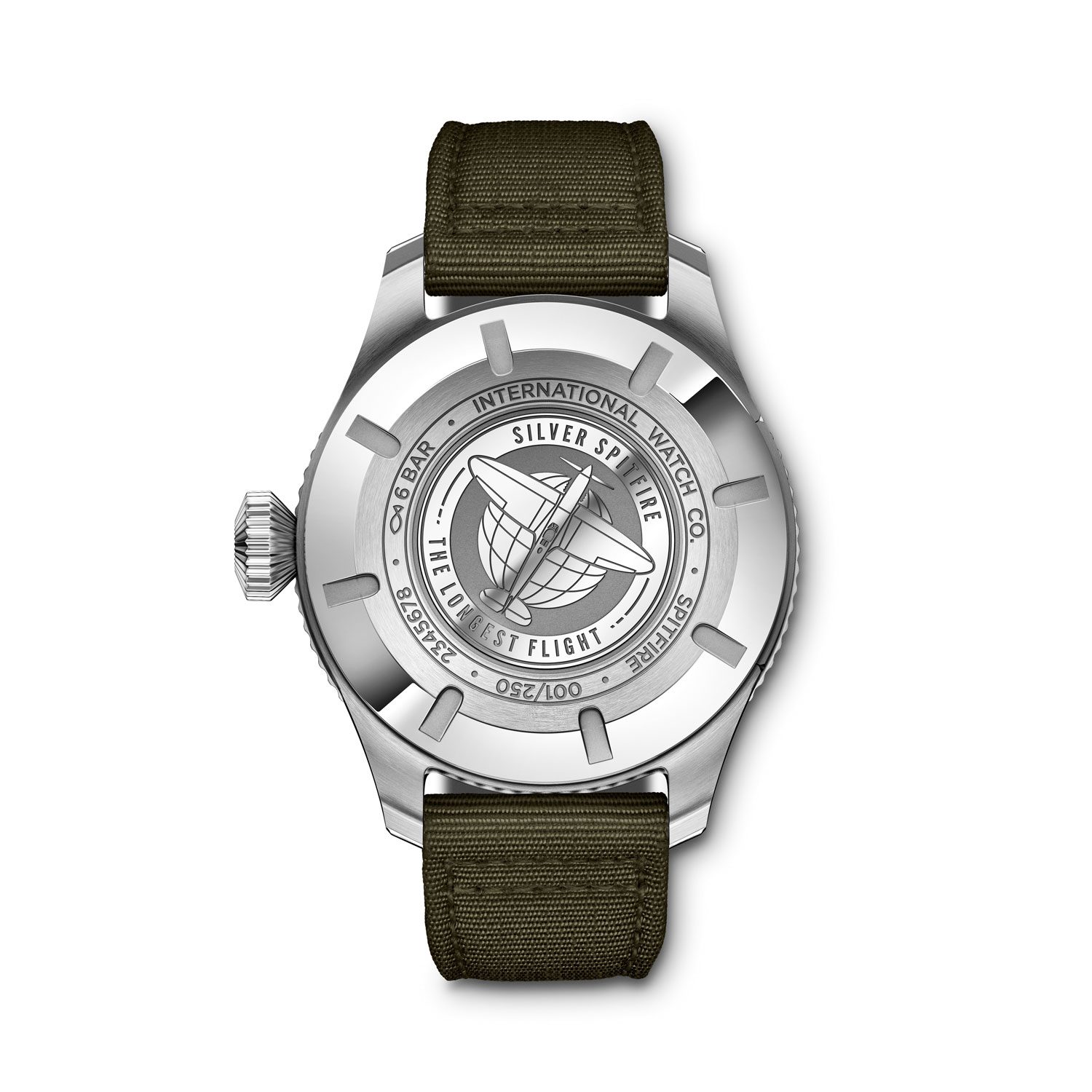
The IWC Pilot’s Watch Timezoner Spitfire Edition “The Longest Flight”
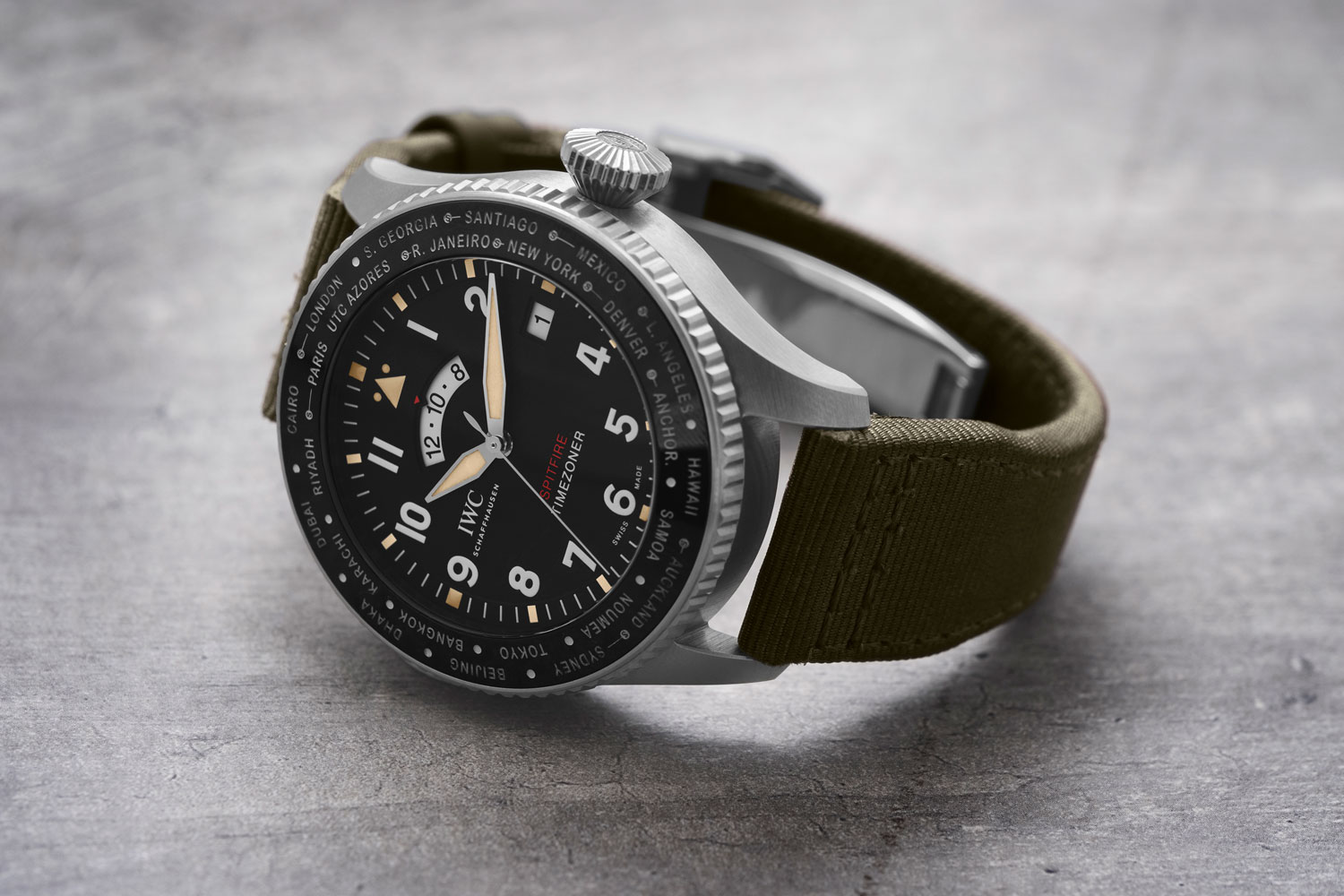
The IWC Pilot’s Watch Timezoner Spitfire Edition “The Longest Flight” (Image © Revolution)
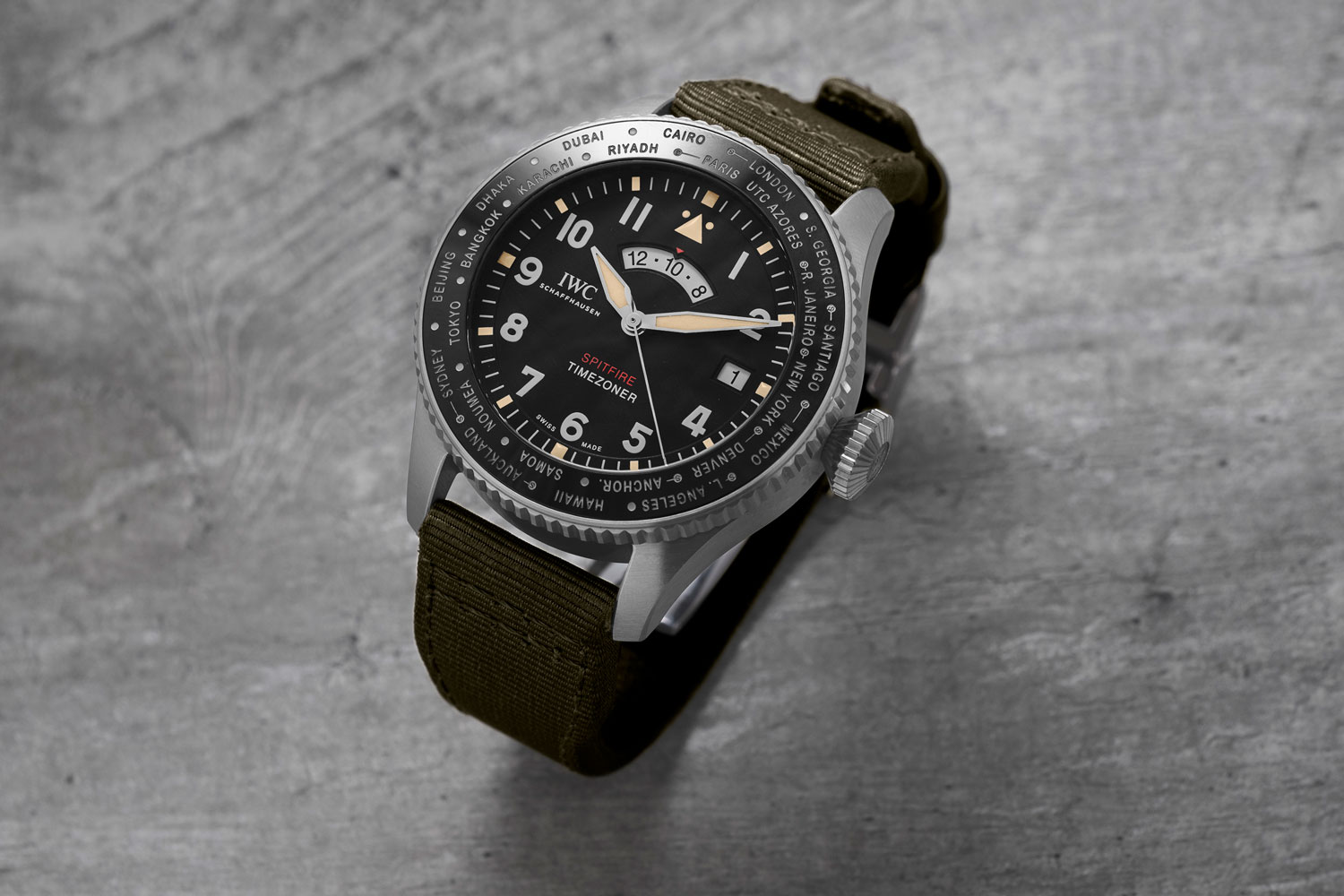
The IWC Pilot’s Watch Timezoner Spitfire Edition “The Longest Flight” (Image © Revolution)










